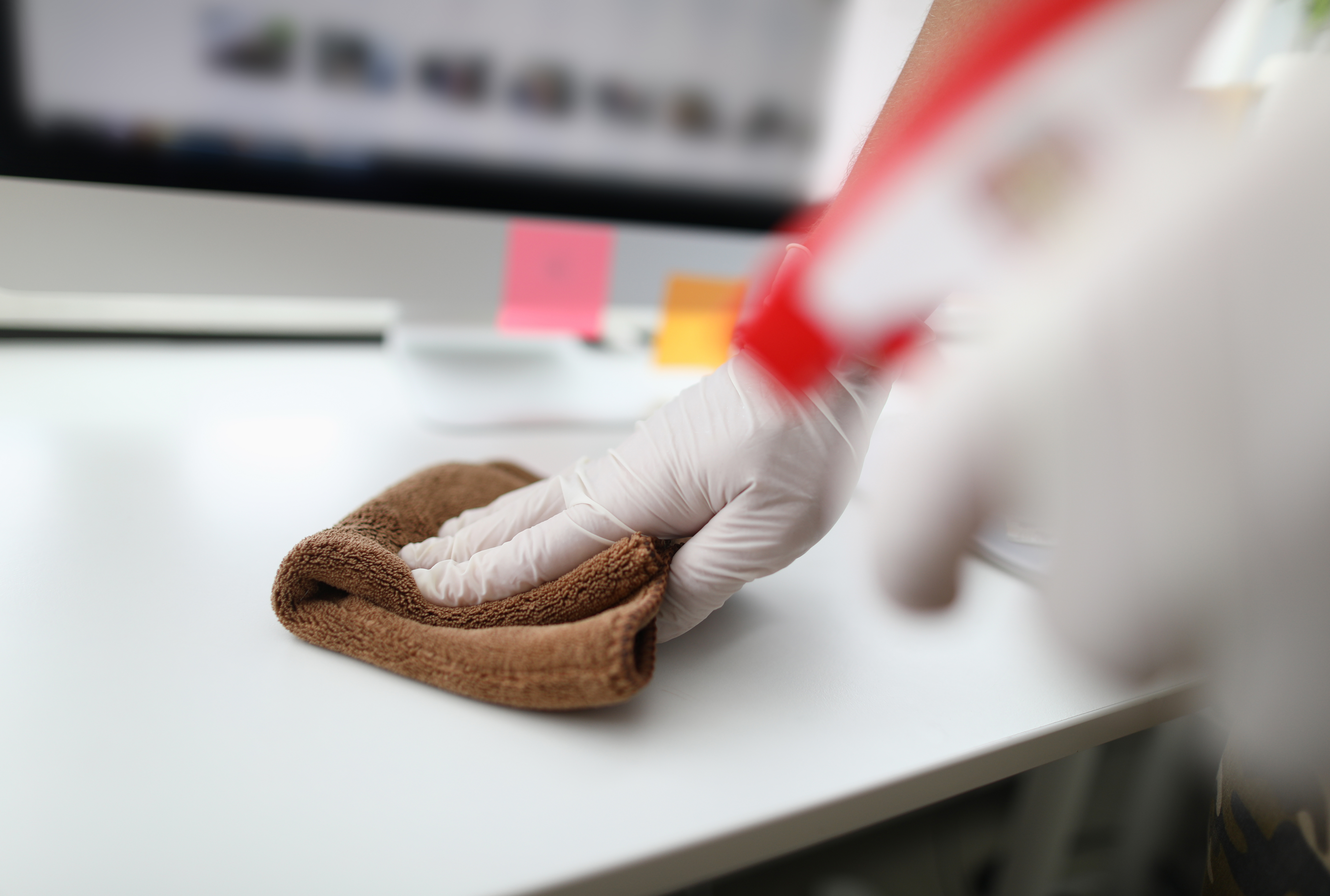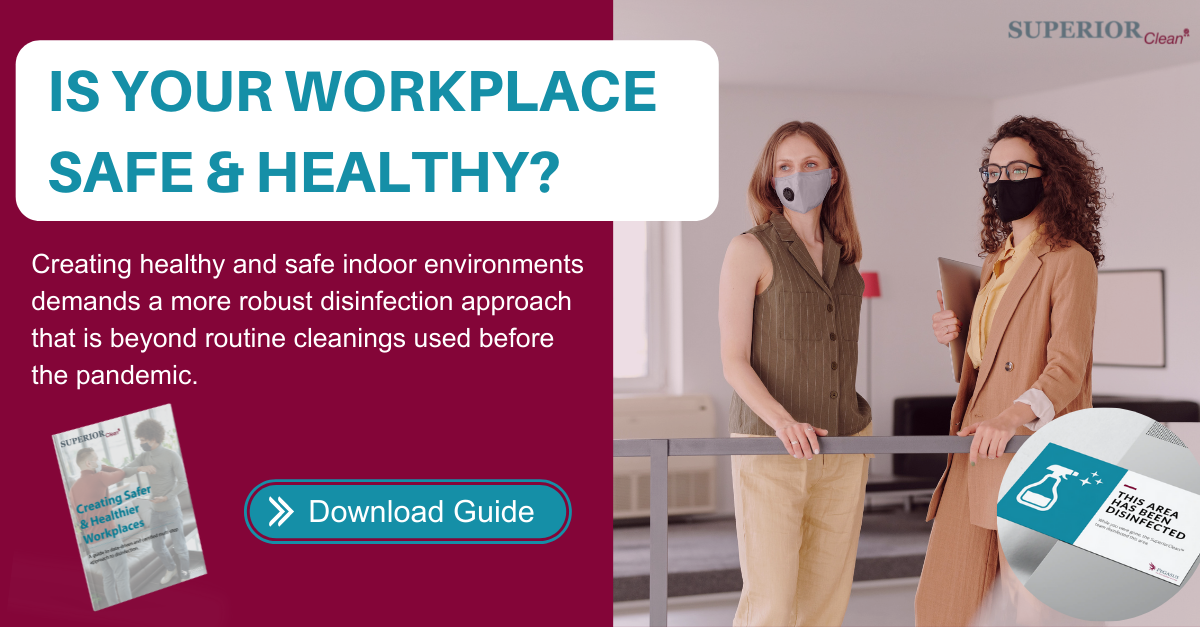As we turn the corner in the COVID-19 pandemic, many workplaces are beginning the return to in-person work. While more and more people are getting vaccinated, not all will choose to or be able to do so. To return to work safely, you need to take steps to prevent the spread of COVID-19 in your workplace. In addition to masking and social distancing where possible, preventative decontamination is one of the best ways to stop the spread of COVID-19.
What Is Preventative Decontamination?
Preventative decontamination is the process of killing germs—bacterial, fungal, and viral—to prevent the spread of disease. It’s a proactive approach designed to target areas most likely to be contaminated in order to limit your exposure to disease-causing germs. When properly conducted, preventative decontamination can stop the novel coronavirus — the cause of COVID-19 — as well as other common diseases from spreading in your workplace.
Why is Preventative Decontamination Important?
Preventative decontamination, if performed correctly, can stop the transmission of COVID-19 before an outbreak occurs. “Frequent disinfection of surfaces and objects touched by multiple people is important,” according to the CDC’s guidance on COVID-19. If an employee or visitor to your workplace is positive for COVID-19, preventative decontamination will ensure that the surfaces that person came into contact with will be decontaminated, keeping other employees from becoming infected.
In addition, employees feel safer and more comfortable returning to work if they know their employer is taking proactive steps to disinfect their environment. One survey showed that a majority of employees returning to work felt safer if their workplace was regularly cleaned and disinfected.
How Is Preventative Decontamination Performed?
For preventative decontamination to work, COVID cleaning services need the right chemicals and the correct technique. Cleaning alone will not prevent the spread of COVID-19.
Which Cleaning Products Should You Use for Preventative Decontamination?
The EPA published a list of chemicals that kill the coronavirus. These include several commercially available disinfectants. In addition, the CDC has recommended bleach solutions as well as alcohol. To be effective, an alcohol solution must be at least 70% alcohol. A hydrogen peroxide solution also works against the coronavirus.
What Techniques Should You Use for Preventative Decontamination?
When focusing on surface disinfection, spend time on the surfaces most frequently touched, such as the following:
- Doorknobs
- Elevator buttons
- Light switches
- Desktops
- Keyboards
- Break tables
- Kitchen counters
- Cabinet & appliance handles
- Bathroom doors
- Faucets
- Toilets
To be effective, you need to allow most commercially produced disinfectants to sit for a certain amount of time before wiping. Follow the instructions on the container. For homemade alcohol solutions, you should let the alcohol sit for at least 30 seconds. If the surface is dirty, you should clean it first before attempting to disinfect it. The CDC also recommends top-down cleaning.
When Should You Call in the Professionals?
Cleaning all the frequently touched surfaces in your workplace can be daunting, especially during a global pandemic. A professional COVID cleaning from Pegasus is the best choice for preventative decontamination. In addition to thoroughly cleaning and disinfecting frequently used surfaces using EPA-approved disinfectants, Pegasus performs hydrogen peroxide fogging, an effective form of decontamination used in hospitals. Your employees can feel confident returning to work when you’ve hired the best.
Ready to get started with the Pegasus SuperiorCleanTM approach? Get your free quote today!







